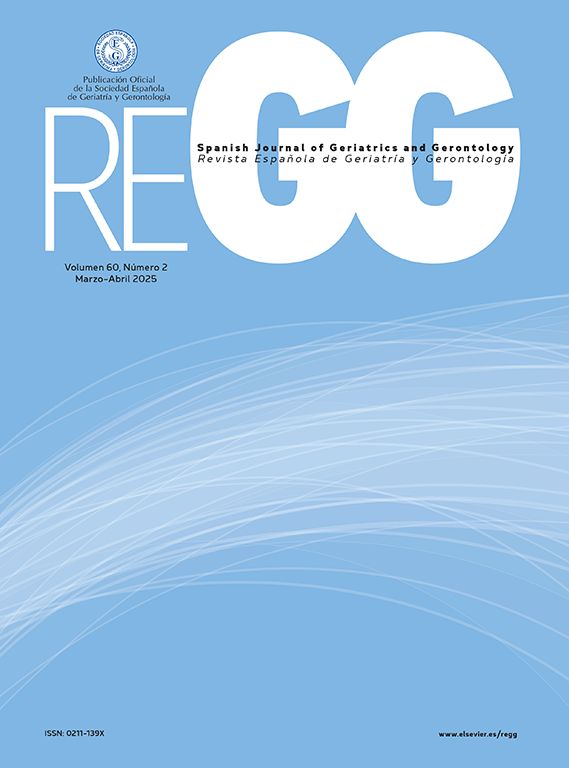Conocer la influencia de distintos factores implicados en la decisión de aplicar sujeciones físicas (SF) en el manejo de ancianos con trastornos de conducta en un servicio de urgencias (SU).
MétodosEstudio observacional prospectivo realizado en el SU del Hospital Universitario Severo Ochoa (Leganés, Madrid). Se incluyeron 125 ancianos con conductas disruptivas y se recogieron variables clínicas, de manejo del paciente, organizacionales y del entorno. Se analizaron los individuos que habían sido sometidos a una SF para conocer qué factores estuvieron relacionados con la decisión final de sujetar.
ResultadosEl 32,8% de los participantes fue sometido a una SF. Los aspectos que más influyeron en la decisión de sujetar fueron los relacionados con la organización y el entorno: la formación específica del personal disminuyó la probabilidad de sujetar en un 50% (p<0,05) y un buen apoyo de todo el equipo redujo hasta en un 75% el riesgo de usar la SF (p<0,0005)
Factores relacionados de manejo del paciente como la contención verbal, el alivio del dolor, el acompañamiento familiar y la movilización precoz redujeron significativamente el uso de SF (p<0,05). El único aspecto clínico dependiente del paciente que aumentó el riesgo de SF fue el sexo masculino (p<0,05).
Otros factores que no se relacionaron con la probabilidad de aplicar SF fueron, entre otros, la ratio enfermera/paciente, el tipo de conducta, la edad ni la situación funcional/cognitiva.
ConclusionesLos factores exclusivamente clínicos del paciente tuvieron poca influencia en la decisión de sujetar al anciano en un SU. Sin embargo, variables del entorno, de la organización y del manejo de la conducta podrían favorecer alternativas más respetuosas y reducir así el uso de SF en el anciano con conductas disruptivas en urgencias.
To determine the influence of different factors involved in the decision to apply physical restraints (PR) in the management the elderly people with conduct disorders in an emergency department (ED)
MethodsA prospective observational study was conducted in the ED of the Hospital Universitario Severo Ochoa (Leganés, Madrid). We included 125 elderly people with disruptive behaviors and collected clinical, patient handling, organizational and environmental variables. Individuals who had undergone PR were analyzed to learn what factors were related to the final decision to restrain.
Results32.8% of the participants underwent PR. The aspects that most influenced the decision to restrain were those related to the organization and environment: specific staff training decreased the probability of restraint by 50% (P<.05) and good support from the whole team reduced the risk of using SF by up to 75% (P<.0005).
Related patient handling factors such as verbal restraint, pain relief, family accompaniment and early mobilization significantly reduced the use of PR (P<.05). The only patient-dependent clinical aspect that increased the risk of SF was male sex (P<.05).
Other factors unrelated to the probability of applying PR were, among others, nurse-patient ratio, type of behavior, age, or functional/cognitive status.
ConclusionsExclusively clinical factors of the patient had little influence on the decision to restrain the elderly in an ED. However, environmental, organizational, and behavioral handling variables could favor more respectful alternatives and thus reduce the use of PR in the elderly with disruptive behaviors in the ED.












